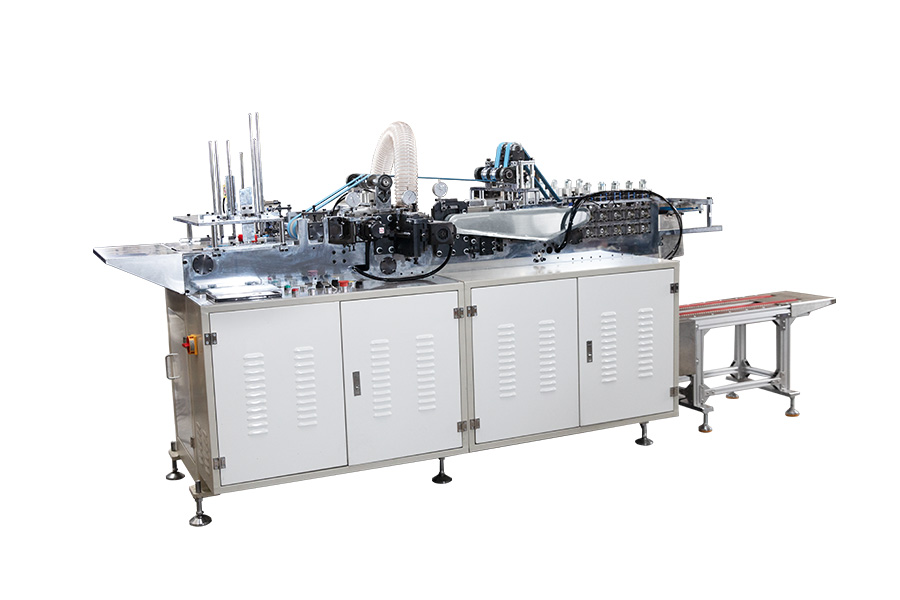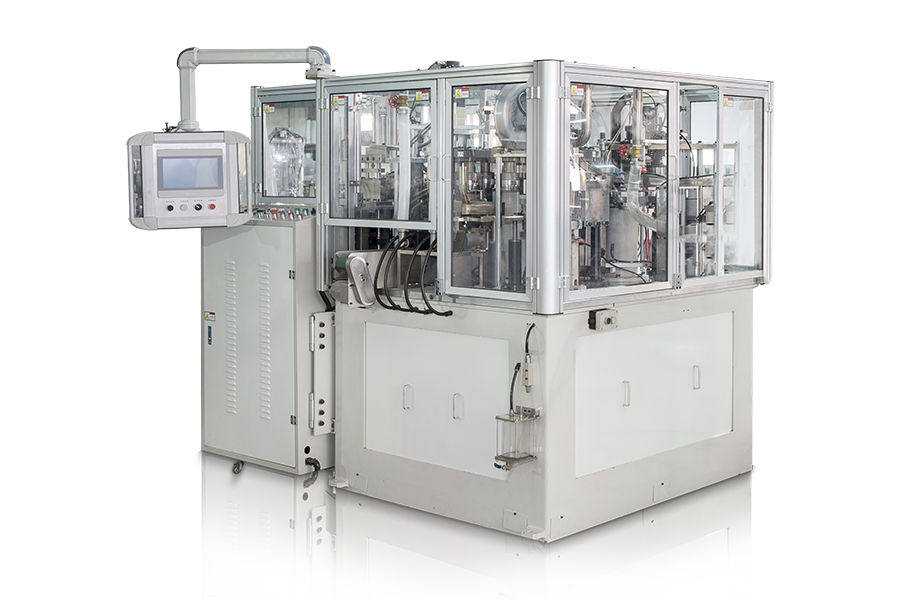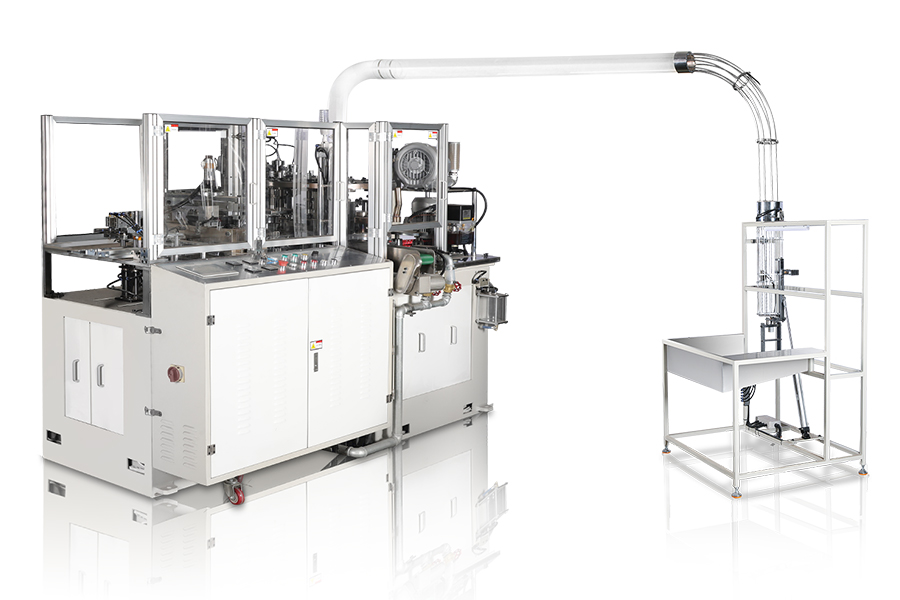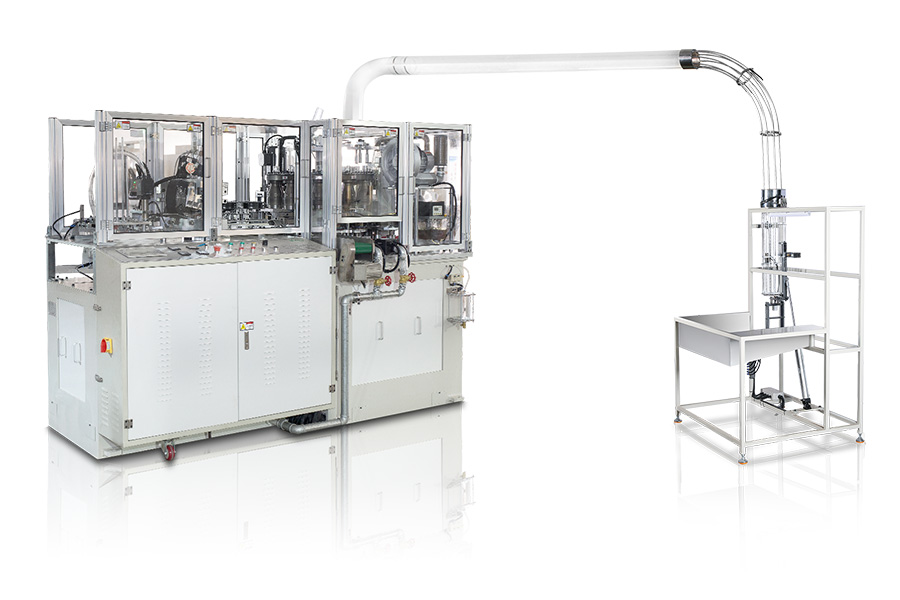In today's fast-paced catering service industry, high-speed paper cup forming machines, as the core equipment of packaging production lines, are meeting the growing demand for disposable paper cups in the global market with their excellent production efficiency and stable product quality. This type of automated equipment converts food-grade paper roll raw materials into finished paper cups of various specifications through a highly integrated production process, providing reliable packaging support for industries such as beverage retail and fast food services. With the improvement of global environmental awareness and the implementation of plastic ban regulations, the technological innovation and market application of high-speed paper cup production equipment are experiencing unprecedented development opportunities.
The core technology of the high-speed paper cup forming machine is reflected in its precisely coordinated multi-process integrated system. The equipment adopts a modular design concept to seamlessly connect the processes of paper feeding, printing, die-cutting, forming, and bottom sealing to form a continuous and efficient production process. The paper feeding system is equipped with an automatic deviation correction device to ensure that the raw materials enter the processing area accurately; the printing unit uses environmentally friendly ink to achieve online multi-color printing; the forming station softens and shapes the paper through a hot air system with precise temperature control; the bottom sealing mechanism uses a special hot pressing process to ensure the complete sealing of the cup bottom. The whole system is driven by an advanced servo control system, and can run at a speed of 200-300 standard cups per minute while maintaining a dimensional accuracy of ±0.2 mm.
From the perspective of equipment structure, modern high-speed paper cup forming machines are mainly composed of seven functional modules. The raw material handling system is responsible for the automatic roll change and tension control of paper rolls; the printing module can be configured with 1-6 color flexographic printing units according to demand; the precision die-cutting system uses CNC machined alloy cutters to achieve accurate cutting of paper cup blanks; the cup body forming mechanism uses a multi-stage hot air softening process to transform the flat paper blank into a three-dimensional cup shape; the bottom heat sealing system ensures the complete sealing and leakproof performance of the cup bottom; the edge processing unit completes the curling or strengthening of the cup mouth; the finished product output system realizes automatic counting and stacking. The modules are monitored in real time through an intelligent sensing system to ensure the continuous and stable production process.
This type of equipment has shown a wide range of application value in the field of catering services. According to the characteristics of different beverages, various functional products can be produced, such as double-layer hot drink cups with insulation structure, cold drink cups with anti-condensation treatment, and milk tea cups with leak-proof lids. In terms of fast food packaging, the equipment can manufacture special paper cups suitable for different food characteristics such as soups, ice cream, and salads. It is particularly noteworthy that with the advancement of environmentally friendly materials, the new generation of equipment has been able to process various types of compostable and degradable plant fiber materials, produce disposable packaging containers that fully meet environmental protection requirements, and provide sustainable development solutions for the catering industry.
Technological innovation is the core driving force for the development of high-speed paper cup equipment. The current research and development focus is mainly concentrated in three directions: improving energy efficiency, reducing energy consumption per unit product through heat recovery systems and servo energy-saving technologies; enhancing the level of intelligence, using machine vision technology to achieve online detection and automatic sorting of product quality; expanding process adaptability, and developing processing systems that are compatible with various new environmentally friendly materials. Some leading manufacturers are exploring the application of digital twin technology, optimizing equipment parameters through virtual simulation, and shortening the debugging cycle of new product development.
In terms of equipment selection and operation and maintenance, users need to consider a number of key factors. The production scale determines the degree of automation and operating speed requirements of the equipment; the product type affects the configuration of the mold system; and the environmental protection standards are related to the material selection and process parameter setting. Daily maintenance work needs to focus on the temperature calibration of the heat sealing system, the lubrication and maintenance of the transmission components, and the status monitoring of the electrical system. Standardized preventive maintenance can not only ensure the stable operation of the equipment, but also significantly extend the service life of key components and reduce the overall production cost.
With the in-depth promotion of global environmental protection policies and the continuous upgrading of the consumer market, the high-speed paper cup forming machine industry is facing important development opportunities. It is expected that in the next few years, the equipment will continue to evolve in the direction of higher speed, stronger intelligence, and better environmental protection. Innovative achievements such as new bio-based materials, low-carbon manufacturing processes, and digital production management will be gradually applied to actual production. Driven by market demand and technological progress, high-speed paper cup forming equipment will surely provide more powerful equipment support for the green transformation of the global packaging industry and help build a more sustainable catering service system.






 English
English عربى
عربى 中文简体
中文简体

















